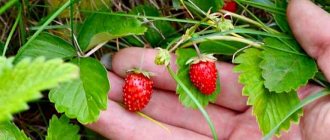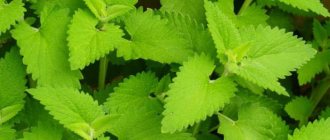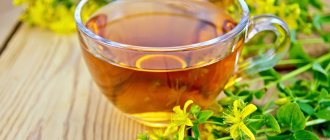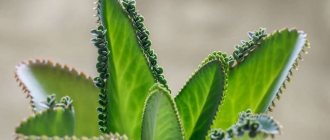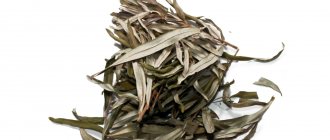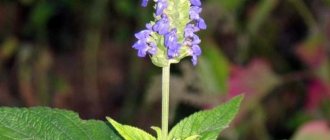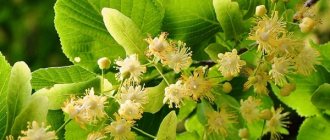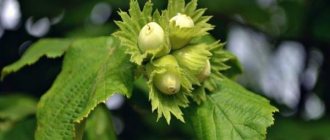What does Kalanchoe look like?
Kalanchoe is an evergreen succulent plant from the Crassulaceae family. It is easy to recognize - the plant has straight, strong stems, on which fleshy and glossy oblong leaves with jagged edges are located opposite each other. The upper leaves are green in color, the lower ones may have a bluish or light purple tint. The plant does not bloom every year, but it produces unusual and very beautiful flowers with bright red petals.
The plant can become a real pearl in the collection of any gardener. And yet, the benefits of Kalanchoe for the home are not limited to the external beauty of the plant. The flower is valued for the vitamin composition of its leaves, which contain ascorbic acid, polysaccharides, and the minerals magnesium, iron, and aluminum. Kalanchoe juice, when used internally and externally, brings health benefits - and is actively used in traditional and home medicine.
Kalanchoe viviparous and its description
This type of Kalanchoe can be safely called a home healer; its medicinal properties are many similar to ginseng. The evergreen pinnate Kalanchoe belongs to the Crassulaceae family of plants. It amazes with its ability to reproduce using an amazing method. The name of the plant from Latin means “sprouting leaf.”
It was called viviparous because many baby shoots are formed on the mother leaf. Each of them forms full roots and is ready for transplanting. We can say that the young parasitize on the mother's leaf up to a certain point.
It is difficult to determine exactly where the homeland of this species of Kalanchoe is located. But it can definitely be argued that the places closest to him are located on the islands of South Africa. The plant adapts perfectly to many places of growth, so it can be found in homes all over the globe.
When developing in a natural environment, pinnate Kalanchoe can grow quite large. In some cases, the stem of this plant is one and a half meters high. Closer to the earth's surface, the stem becomes very hard and woody.
The root system of Kalanchoe is superficial and highly branched. The leaves have an oval shape, along the edges they have teeth, on which shoots subsequently appear. The leaf itself is fleshy and juicy. The leaves are attached to the stem in a checkerboard pattern.
Specifics of caring for a plant at home
Caring for a plant at home is the simplest, without any difficulties:
- As described above, Kalanchoe is native to the African continent, so this type of plant requires sunlight. True, in a city apartment you should not place it on the windowsills, where the sun's rays fall most of the day. This is a very reckless act;
- In the warm summer season, the flower loves to pamper itself. It can be placed on a loggia or balcony. And in winter it must be kept in a cooler place;
- This plant has one useful property - it is able to accumulate moisture in its fleshy leaves. For this very reason, Kalanchoe does not need to be watered frequently, but it is also not worth abusing the unpretentiousness of the flower. It is unlikely that its moisture reserves will be enough for a month if they forget to water it;
- Over time, the vegetative properties of the plant weaken, the leaves may turn yellow and dry. In this case, they are carefully cut and removed. In their place, new leaves will grow, along the edges of which shoots will form.
Popular: For office and apartment flowers-pebbles of conophytum (Conophytum)
Some types of Kalanchoe do not have the same pronounced medicinal properties. Many of them are grown at home as ornamental bushes.
The benefits of Kalanchoe for the human body
The beneficial properties of the indoor plant are expressed in the fact that Kalanchoe:
- has an antibacterial effect and helps quickly eliminate inflammation;
- promotes rapid healing of wounds, abrasions and burns;
- when used internally, it improves metabolism and helps normalize bowel movements;
- cleanses the body of toxins and accumulated waste;
- has a beneficial effect on the gallbladder;
- helps the liver function, reducing blood cholesterol levels;
- helps stop bleeding during bleeding.
Kalanchoe during pregnancy
The juice of the plant is not included in the list of home remedies that are clearly prohibited during pregnancy. However, doctors recommend treating homemade flowers with caution and not using them unless absolutely necessary - especially during problematic pregnancies.
The fact is that the properties of the plant have not yet been fully studied. All substances present in the composition pass through the woman’s body to the developing fetus - and theoretically can harm it. In addition, for example, when treating a runny nose, Kalanchoe causes intense sneezing - this causes the abdominal muscles to contract, which should be avoided by pregnant women.
Useful properties of Kalanchoe
Kalanchoe was brought from Madagascar, where it still grows as a representative of the wild flora.
This flower is also found in many Asian countries. In our climate, the plant feels best on the windowsill and is not difficult to care for. The beauty and benefits of Kalanchoe are ideally combined, which is why this window decoration is the most popular. The plant comes in different types, each of which is useful in its own way. The most common are Degremona and Cirrus Kalanchoe - these are record holders for the content of useful substances. The plant juice is used in the following cases:
- to stop bleeding;
- relieve inflammation;
- speed up the wound healing process;
- used as an antiseptic.
The owners of this plant know what Kalanchoe helps with and actively use it in folk medicine. The juice of the plant promotes the speedy healing of ulcers and purulent wounds. It restores tissue, removes the effects of boils, and is used to treat erosions.
It is useful to have such a home plant. You just need to know what medicinal Kalanchoe looks like, because many folk methods of fighting rashes and acne include its juice in their recipe. The plant is used in dermatology and cosmetology, and is actively used as an ophthalmic medicine and therapy for ENT organs. Kalanchoe is indispensable in the home treatment of many ailments: herpes, varicose veins, periodontal disease, stomatitis and gingivitis. It helps relieve toothache of various types.
The healing properties of Kalanchoe are provided by organic acids, minerals (copper, calcium, iron) and vitamin C.
Kalanchoe for children
You can give Kalanchoe to children for a runny nose, cough and sore throat - but only after reaching 3 years of age. The plant can potentially cause allergies, so infants cannot be treated with it.
When using a home remedy for children, the plant juice must be diluted with clean water or milk. Concentrated juice can burn the baby's sensitive mucous membranes.
Attention! Since Kalanchoe can cause allergies and cause harm to the body in some diseases, it can be given to children only after consultation with a pediatrician.
Traditional medicine recipes with Kalanchoe
In order for the juice of the fleshy leaves to show all its beneficial properties, you need to know exactly how to use the home plant. There are several most popular recipes for preparing medicinal products.
Kalanchoe juice
Most often, juice is used to treat diseases at home - pure or diluted with water or milk. In order to use a healing remedy, you do not need to wait, as is the case with decoctions or infusions.
Preparing the juice is very simple - just take the required amount of fresh leaves of the plant and carefully squeeze the juice out of them. When used externally, the resulting product is used to make compresses and lotions for diseased areas.
For example, juice compresses are used to treat:
- skin fungus - gauze is dipped in juice, and then applied to a problem area on the skin and secured with a bandage or plaster, changing the lotion three times a day;
- ulcers and inflamed wounds - a gauze bandage soaked in the juice of the plant is fixed on the diseased area and changed once a day; Kalanchoe will also help with burns.
Kalanchoe can also be used internally - but for this it must be diluted.
- To treat stomach ulcers or cystitis, dilute 1 teaspoon of fresh juice in a glass of drinking water and drink three times a day shortly before meals.
- For a runny nose, the squeeze is diluted with milk in a ratio of 1:3, and then a couple of drops are instilled into each nostril three times a day.
- Also, for otitis media and colds, you can drip Kalanchoe into your ears - after diluting it with water.
Important! In all recipes for internal use, instead of milk, you can use ordinary boiled water. But you cannot use undiluted juice internally - this will cause harm, since the product will burn the mucous membranes.
Infusion of Kalanchoe
For external and internal use, not only fresh juice is used, but also a decoction of the leaves of a houseplant. It is not difficult to make - you need to pick and chop a sufficient number of fresh leaves, and then fill them with clean water. There should be 5 times more water. Then the mixture is steamed for 20 minutes, and then cooled and used for medicinal purposes.
We recommend reading: Herb (knotweed) kidney: medicinal properties and contraindications
- Kalanchoe helps against warts; the infusion can be used to wipe irritated areas of the skin for any dermatological diseases.
- Kalanchoe helps well with purulent wounds, as it disinfects the wound surface and promotes speedy healing.
- The product works well for varicose veins, and can also be used to wipe inflamed wounds and healing burns.
- The infusion is especially useful for rinsing the mouth and throat for sore throat and periodontal disease - fresh juice is not used for these purposes, as it can leave burns.
- An infusion of a houseplant will be beneficial when used internally for gastritis with low acidity or colitis. The product should be drunk twice a day, shortly before meals, a few sips. The total course of treatment is a month, after which you need to take a break.
Not only fresh leaves of a houseplant are suitable for preparing an infusion. Instead, you can buy dry extract at the pharmacy - it has the same beneficial properties.
Kalanchoe tincture with vodka
The alcoholic tincture on the leaves of the plant brings great benefits to the body. It is prepared like this: finely chopped leaves are tightly packed into a small glass jar and regular vodka is poured on top. The jar is tightly closed and put in a dark place for a week.
- Kalanchoe tincture for joints will be of great benefit - if pain occurs, it is recommended to rub the affected areas with this remedy using gentle massage movements. It is best to perform rubbing at night, so that immediately after the procedure you can cover yourself with a warm blanket and give your joints complete rest.
- A tincture of Kalanchoe juice will be beneficial for colds - you can rub the vodka-based product on your chest and throat to properly warm the deep layers of the skin. The remedy is also taken orally - twice a day until the symptoms disappear. However, the liquid should not be consumed in its pure form - 1 teaspoon should be diluted in a glass of drinking water and only then drunk in small sips.
Kalanchoe tincture with alcohol
An alcohol tincture on the leaves of the plant is prepared as follows - 2 large spoons of crushed fresh leaves are poured with a glass of alcohol in a small glass container, sealed and put in a dark place for 12 days.
After the prescribed period has passed, the finished product can be filtered and used for home therapy. If the drink is to be taken orally, the medicine must first be diluted with water - in a ratio of 1 glass to 1 teaspoon, so as not to harm the body.
- Kalanchoe tincture for prostatitis will be very useful - a medicine diluted in water, consumed in the morning before breakfast and in the evening shortly before dinner. In total, you need to take the drug for 40 days, and when relief occurs, the dosage is reduced by 2 times.
- The remedy is used to treat colds - however, in this case, the healing properties of Kalanchoe will be good only for adults; children will be harmed by them. Dilute half a teaspoon in a glass of warm water and gargle 4 times a day.
- The benefits of alcohol tincture on Kalanchoe will manifest itself in case of varicose veins. This therapy should be carried out no longer than 2 weeks in a row - then take a break for another 10 days.
Kalanchoe ointment at home
To treat fungus, skin ailments and injuries, not only rubbing with juice and alcoholic tinctures is used. You can prepare a useful ointment - for this, 45 ml of fresh Kalanchoe juice is mixed with 90 g of lanolin, and then literally 1/4 g of furazolidone and novocaine are added. Homemade ointment is thoroughly mixed until smooth.
Kalanchoe ointment is very useful for varicose veins, dermatitis and fistulas, abscesses and frostbite. The composition is used to treat burns and even bedsores at the healing stage; it helps with severe acne. You can lubricate the skin with the product for no longer than 15 days in a row so as not to cause harm.
Kalanchoe for a runny nose
The most popular are homemade drops from the juice of the plant - they are a great help for severe nasal congestion. Before use, the product is diluted with milk or water to avoid harm from burns to the mucous membrane; no more than a couple of drops are dripped into each nostril.
Advice! To enhance the healing properties of the plant juice, it is recommended to keep the cut leaves in the refrigerator for 5 - 7 days before preparing the drops.
Folk recipes
Queen of the night cactus: main varieties and care options
In order for the plant to have the most beneficial effect on the human body, you need to know how to use Kalanchoe correctly. An incorrectly prepared tincture, ointment or any other composition is no longer healing.
To prepare medicinal tinctures, it is best to use the leaves, which are located as close as possible to the stem.
Tincture
This is the first and most common remedy. To prepare, you need to chop the pre-prepared leaves and pour them with alcohol or vodka. Place the container with the contents in a dark place and leave for 14 days. After this, the tincture should be stored strictly in the refrigerator.
Kalanchoe tincture
The product can be rinsed in the mouth and used for inflammation, brittle nails and varicose veins.
Fresh Juice
Juice is the easiest to get. It is usually used for ENT diseases in the early stages of development. As a rule, apply a few drops 5 times during the day. In a similar way, the composition can be applied to wounds, warts and papillomas, fixing a tampon on the problem area.
Ointment
To prepare, mix fresh juice with fat or petroleum jelly. All components must be thoroughly mixed, and then kept in a water bath for half an hour.
It is an effective remedy for reducing swelling, inflammation and treating wounds; it is also used for cosmetic purposes. It has an extremely beneficial effect in the treatment of skin diseases and does not cause itching or burning.
Homemade Kalanchoe ointment
Admission procedure
Homemade medication regimens:
- Juice treatment for stomach ulcers. To do this, you need to take concentrated juice three times a day, 1 tsp, for 1 month.
- For mastitis, applications are applied several times a day.
- For influenza, the nasal mucosa is lubricated with juice three times a day.
- For gum diseases and inflammation of the oral cavity, rinse the medicinal composition.
- For ear pain, the juice is instilled into the ears, 1-2 drops 3-4 times during the day.
The juice of the plant is also actively used for mental and physical fatigue, warts, psoriasis, tuberculosis and kidney inflammation.
Kalanchoe in traditional medicine
Official medical science paid attention to Kalanchoe in the early 1960s. Research and clinical trials were conducted, during which the beneficial properties of the plant were confirmed and it was found that Kalanchoe will not cause harm when consumed. And in 1966, the juice of the plant and an ointment based on it were included in the State Register of Medicines. True, for a long time medicines were used only externally - to treat burns, wounds and ulcers.
We recommend reading: Euonymus: medicinal, magical properties, applications, recipes
Currently, there are preparations based on Kalanchoe for both external and internal use. They have antiseptic and immunomodulatory properties, so they are used for a wide variety of ailments.
Home care
Kalanchoe Blossfeld is an unpretentious flower that can withstand unfavorable environmental conditions. However, proper care affects the constant flowering and pleasant appearance of the plant.
| Options | Description |
| Soil and pot | The substrate is prepared from compost soil and sand. It is important to ensure constant soil drainage to create loose soil for oxygen access to the root system. For additional drainage, the bottom of the pot is lined with a layer of expanded clay chips, on top of which the substrate is poured. The pot should be made of wood, plastic or clay. Since the plant requires constant soil drainage, it is better to choose a fireclay pot. The size should not be too larger than the flower itself. Otherwise, moisture will stagnate in the soil, which will disrupt the growth process. |
| Lighting | A light-loving plant requires good lighting. For healthy growth and abundant flowering, it is better to choose windows on the eastern and southern sides of the house. If there is not enough light, use artificial lighting in the form of lamps. On too sunny, hot days, it is necessary to remove the pot from direct sunlight; for additional ventilation, move the pot to a fan. |
| Watering | All types of Kalanchoe are very resistant to dry conditions; excessive watering provokes stagnation of moisture in the pot and rotting of the roots. The amount of watering depends on the time of year and the stage of flower growth. In summer, the plant is watered whenever the top layer of soil in the pot dries out; in winter, the amount of watering is reduced by half. The water should be soft and not cold. |
| Temperature | The temperature for healthy growth should be from 16 to 24°. During the day on summer days, the temperature is allowed to rise to 27°, but not higher. |
| Air humidity | Kalanchoe Blossfeld does not suffer from dry or humid air, since the leaves have a protective barrier in the form of a waxy coating. |
| Top dressing | Fertilizing is carried out with complex mineral and organic fertilizers. The flower is typically fertilized with a low phosphorus content in the fertilizer to prevent a drop in zinc levels. |
| Transfer | It is necessary to replant the plant every two years by transshipment. The pot for replanting should be a couple of cm wider than the previous one. |
| Trimming and pinching | Pruning of the old peduncle is carried out after flowering has ended. It is pruned before large leaves begin to grow. If the Blossfeld variety of Kalanchoe was grown recently, then it does not need pinching. |
Video about caring for Blossfeld at home:
The use of Kalanchoe in home cosmetology
The beneficial properties of the plant are used not only for treatment, but also for caring for external beauty. Masks and lotions are used comprehensively for the body, face and hair - and bring good results.
For facial skin
The benefit for the face is that the properties of the plant normalize oily skin, can eliminate rashes and age spots, cleanse pores and relieve irritation.
- In order to cleanse the skin and even out its color, remove the skin from the leaf of a home flower, exposing the pulp, and wipe the face. After this, you need to massage the skin with light movements and leave the product to be absorbed, and then apply a moisturizer.
- To slightly dry oily skin, mix dried leaves of chamomile, linden and mint, pour boiling water over it and leave for half an hour. After the product has cooled, the water is drained, and the herbs are mixed with Kalanchoe juice and applied to the face for 20 minutes.
Kalanchoe for hair beauty
Useful masks and decoctions based on Kalanchoe strengthen hair, make it thicker and softer, and give a pleasant natural shine. The following tool is popular:
- mix Kalanchoe juice, garlic and birch sap in small volumes of 5 ml;
- add a small spoon of honey and egg yolk;
- mix and apply to hair for 2 hours.
Wrap your head in cling film and a warm towel so that the product is properly absorbed. Then the mask is washed off using shampoo.
For hands and nails
Kalanchoe is an excellent remedy for softening the skin of hands. In addition, Kalanchoe nail fungus is treated - the antiseptic properties of the plant quickly heal the nail plate and cuticle.
- To take care of your hands, you can simply add a few drops of fresh plant juice to your regular cream. It is better to smear your hands at night, and it is recommended to wear cotton gloves on top.
- If you need to deal with nail fungus, it is recommended to wrap each of the nail plates with gauze soaked in healing juice - and also put on gloves on top. The procedure is carried out daily or every other day until the fungus disappears.
Caring for Kalanchoe
This succulent is an unpretentious house flower. There is no need to come up with any schemes to care for it, since the plant does not cause much trouble.
Lighting and temperature
Since the plant came to us from hot countries, it requires good lighting. If Kalanchoe grows on a windowsill facing north, it can become very elongated and in this case you will have to wait a long time for flowering.
The growth option for viviparous is windows facing the western or eastern side. In winter, it is recommended to move the flower to a south window. If the plant is exposed to direct ultraviolet rays, the leaves may become burned and acquire a reddish tint.
Like many succulent plants, Kalanchoe prefers to develop at moderate air temperatures. In summer, the optimal temperature for it is +25C, but in winter it should be within +13-16C.
Watering and fertilizing
Kalanchoe viviparous is capable of accumulating the moisture it needs in its fleshy leaves, which it then gradually uses up. Most often, overflows can occur in winter; the soil in the cool climate of the room does not have time to dry out. Excess moisture can cause the root system to rot and the plant to become sick.
In winter, it is recommended to check the soil layer before watering. It needs to dry completely, then water the plant. This is the most important point in caring for succulent plants; if you strictly follow it, the flower will delight its owners for many years to come.
This type of indoor Kalanchoe is not very demanding when it comes to feeding or fertilizing. Fertilizing is applied only when the plant has formed buds and is about to bloom. To do this, you can use any fertilizer that is intended for flowering plants.
It is recommended to use universal fertilizer during the growing season. To do this, it is enough to fertilize the flower once a month, but use only half the required dosage. When the plant is in a dormant period, do not apply any fertilizer.
Popular: Growing, care and necessary properties of hare cabbage
Soil and replanting rules
To grow Kalanchoe, it is customary to use a neutral or slightly acidic soil mixture. It should allow moisture to pass through and drain well. The best option is to buy ready-made soil for growing succulents. If the soil is universal, then you can add one part of river sand to it.
The young plant blooms quite quickly, so it needs to be replanted every spring. The pot is selected a couple of cm wider than the previous container. An adult plant is replanted much less frequently, approximately every two to three years, once using the transshipment method.
Before planting Kalanchoe in a new pot, it is necessary to lay a small layer of drained material on the bottom. This will help not retain moisture at the bottom of the pot, and will not contribute to rotting of the root system. Let's take a step-by-step look at how to replant Kalanchoe:
- Before transplanting, the plant should be watered and allowed to stand in an old pot for some time;
- After a period of time, the plant is carefully removed from the container, keeping the earthen lump. You can remove the soil at the edges with a knife and dump out the flower with a lump;
- Slowly shake off excess soil from the roots of Kalanchoe;
- Place the plant on a drainage layer sprinkled with a small amount of soil. The composition of the soil should be similar to the structure of the previous filling of the pot;
- Spread the roots thoroughly. Sprinkle the prepared soil mixture on top. After a couple of weeks, the plant will acclimatize and take root in the new soil.
Harm to Kalanchoe and contraindications for use
The harm and health benefits of Kalanchoe balance each other - despite the valuable properties of the plant, sometimes it is prohibited to use it. Namely, Kalanchoe cannot be used:
- with chronic low blood pressure;
- for oncological tumors;
- for hepatitis and other liver diseases;
- for serious joint problems;
- if you are allergic to a natural remedy.
The use of Kalanchoe tincture and other home remedies requires careful adherence to the dosage. If you exceed the recommended volumes, the product will cause heartburn, diarrhea, and when applied externally, it will harm the mucous membranes and skin.
How to store
To prevent the leaves from your home flower from having to be plucked off too often, it is better not to pour out the excess prepared medicinal products, but to store them.
- The beneficial juice of a home plant retains its medical value for a week, and it must be kept in a glass container.
- Kalanchoe ointment can be stored for a month - even outside the refrigerator.
- Tinctures made with alcohol and vodka retain their beneficial properties the longest - they will easily last 3 months in the refrigerator.
But a solution with added milk for instillation into the nose or ears cannot be stored at all - a fresh product is prepared before each use.
